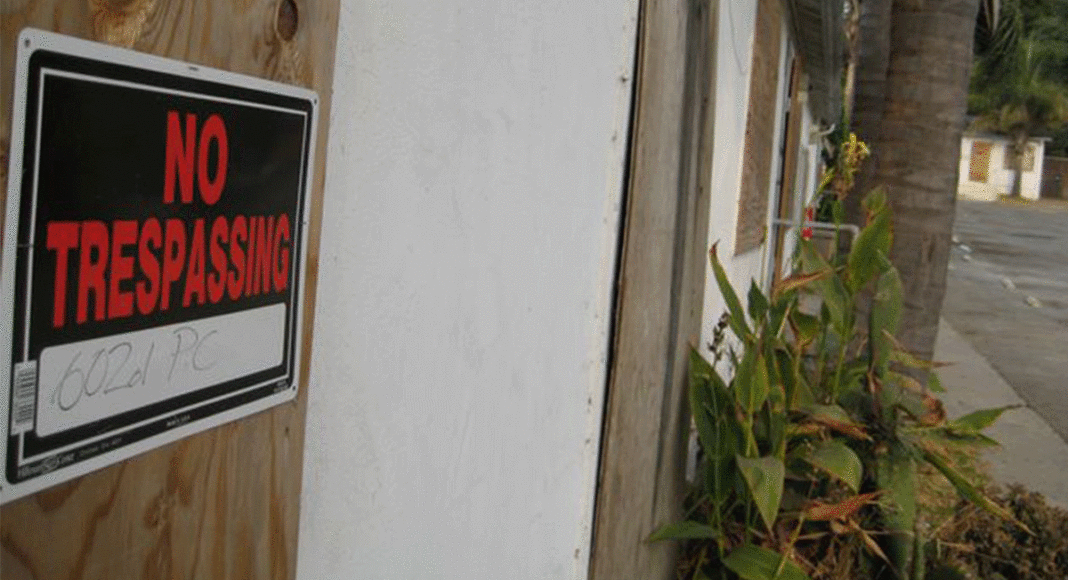After years on the waitlist for a Section 8 voucher, a low-income renter might sigh with relief when he or she finally secures what seems like a winning ticket to an affordable place to live. But about half the time, that voucher runs out before he or she can find a home that will accept them, says Jenny Panetta, the Housing Authority of Santa Cruz County’s executive director.
“It’s really hard to find housing, but if you are homeless and you have a voucher, it’s so much harder,” Panetta told a small crowd gathered at the Homeless Services Center for a discussion sponsored by Smart Solutions to Homelessness.
Midway through Affordable Housing Week, Panetta outlined plans to help people get housing with their new vouchers, as well as the local challenges for Section 8 that lie ahead.
Robyn McKeen, project manager for Smart Path, detailed plans to help the homeless navigate a network of services. Local housing philanthropist Sibley Simon explained his plan to build a 100-unit complex within the footprint of Homeless Services Center.
Panetta—no relation to Congressmember Jimmy—says many of the new Section 8 holders that are just now getting their vouchers have been waiting in line since 2008.
There are 4,500 households using vouchers, she says, and 400 more are currently looking for a place with a new voucher. Those voucher holders get turned away by one landlord after another, in spite of a team of volunteers and staffers working on their behalf to build relationships with landlords.
Panetta says the Housing Authority’s been working on solutions, including with a new program via the All-In Landlord Partnership called Spruce Up that brings in volunteers to fix up a unit if the landlord agrees to rent to Section 8 tenants in return.
The Housing Authority has also been running a 20-household pilot program that Panetta plans to expand in the new year. Although she and her team are still ironing out the details, the new effort, dubbed the Landlord Incentive Program, operates rather like a guardian co-signing for any other new tenant. The program, with support from the county’s local governments, guarantees up to $2,500 for a new Section 8 tenant to a landlord for costs that include damage and missing rent.
“We spend a lot of time convincing landlords that our tenants are as good as free-market tenants,” she says. “Now they’re better. Ours come with a guarantee. What other tenants come with a guarantee?”
Panetta says that in the past there were occasional challenges with Section 8 tenants, but those have since been remedied by better supporting renters and improving dialogue with landlords, she says.
Even before the incentive program’s official 2018 launch, the Housing Authority will be dealing with a surprising twist from U.S. government: against all evidence, the Department of Housing and Urban Development lowered its estimation of fair market rents for Santa Cruz County by a few percentage points, even as a housing crisis ravages through the county. That change reduces the value of each housing voucher. Panetta says the Housing Authority has started crunching the numbers and will appeal the decision by December, hoping to hear back within a few months, adding that she’ll have more information in the next year.
Each Section 8 voucher pays the established fair market rent to a landlord—not necessarily the listed price for a given unit. The tenant pays 30 percent of their income toward the rent. The voucher covers the rest.
Simon, executive director of New Way Homes, has gotten to know the Section 8 landscape well through 180/2020, a project he helped start to end chronic homelessness. If Section 8 holders keep getting the doors slammed in their faces, he hopes his plans for an apartment complex to prioritize those in need will meet pent-up demand.
“If Jenny can’t get landlords to accept vouchers for housing,” he says, “I’m going to build the housing.”













